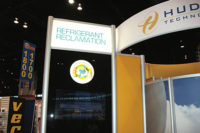Let’s see…61 Down in the Sunday crossword puzzle was “MPG-rating org.” Hmm, so it has to be some regulatory agency. And since the clue has abbreviations, that means the answer has to be an acronym.
Okay, MPG relates to the automotive sector. What regulators are involved in automotive, specifically as related to miles per gallon?
Well, 60 Across is “Anne of ______ (1909 novel).” Now, “Seven Gables” is too long for the seven-word answer and I’m not even sure it was written in 1909. But thanks to PBS and my wife the answer for sure is “Avonlea” which means the first letter of the answer I’m looking for is “E.”
Now, 67 Across is “Jack or King.” Working with other verticals, I know the answer is “playing card” making the second letter I’m looking a “P” and…well… I don’t have to go any further than that, because I know for sure that the answer is an old friend of ours in the HVACR Industry: EPA as in Environmental Protection Agency.
(In fact, I never did figure out what 73 Across was where the “A” in “EPA” falls. All I got for “River ducks” was “ _ _ A L S.” But no matter.)
The point here is that the U.S. Environmental Protection Agency that we fret about in our industry is also involved in dozens and dozens of other industries and sectors of our country. Its reach is encompassed in five broad categories: Air (under which fall HVACR and automotive), water, land, endangered species, and hazardous waste. It also in recent years has struggled with budget constraints arguing that it cannot do all that it has been mandated to do by Congress because Congress won’t give it the money it needs.
For HVACR, enforcement is spotty, but when fines come they are large. They have mostly come against end users such as supermarkets for leaking large quantities of HCFC-22. Contractor fines are few. The most recent flare ups with our industry and the EPA has been over how much R-22 the agency will allow refrigerant manufacturers to produce and be imported heading toward a final phase out in a few years. Everybody seems to have an opinion and there are a lot of different opinions.
The point to make is that regardless of extent of enforcement, there are no venting, recovery, and recycling rules in place that contractors need to adhere to. Whatever the final phase out timeline ends up being for R-22, contractors need to be aware of that and plan accordingly. Both are done in the best interest of a contractor’s most important interest — the customer.



